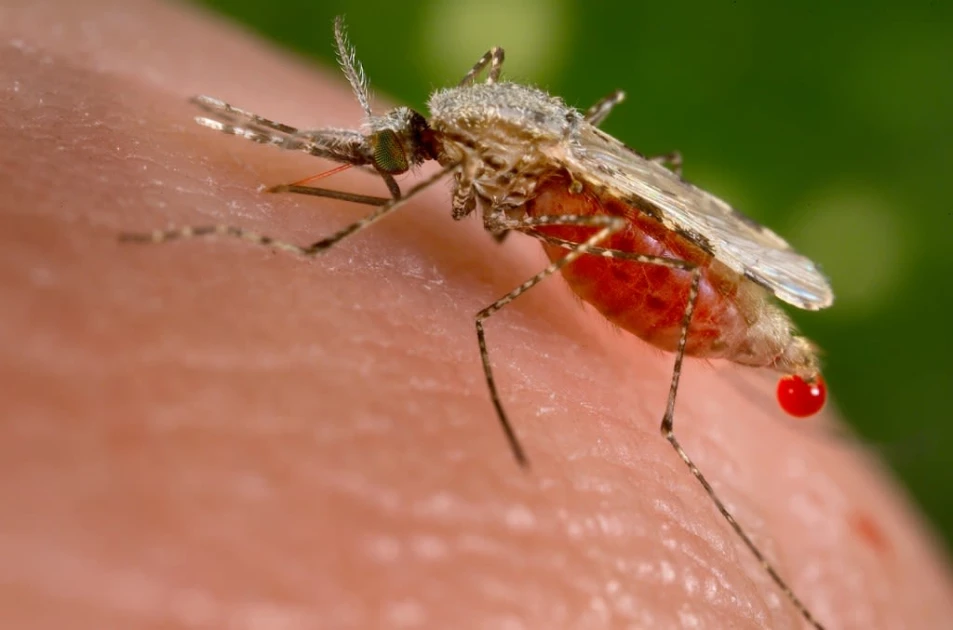OPINION: Kenya's path to ending malaria lies in renewed commitment to primary health care, mass vaccination

File image of malaria vector Anopheles stephensi. PHOTO|COURTESY

Audio By Vocalize
Kenya's pathway to end malaria lies in renewed commitment to primary health care, and mass vaccination.
The World Health Organization (WHO) estimated that in 2022, there were a staggering 608,000 deaths attributed to malaria with most of these deaths recorded in Sub-Saharan Africa. About 249 million people fell ill with malaria.
Between 2010 and 2015 the world had recorded a steady decline in both malaria incidences and deaths, however, the numbers surged with the onset of the COVID-19 pandemic due to a disrupted global supply chain of pharmaceuticals and the drift of healthcare to mitigate the pandemic.
Sadly, Kenya is among the 29 countries bearing this burden.
In Kenya, malaria is not just a disease; it is an enduring enemy that has plagued the nation for years. Like many other Sub-Saharan African countries, Kenya continues to grapple with the burden of malaria.
Despite widespread awareness and strides made in recent years to control the disease, it remains a leading cause of morbidity and mortality in the country, especially among vulnerable populations such as children under five and pregnant women.
The 2020 Kenya Malaria Indicator Survey revealed a sobering reality: seven in ten Kenyans live in areas that predispose them to the highest possible risk of contracting malaria.
The report also showed that malaria-related cases accounted for 13–15% of all outpatient consultations.
One of the primary challenges in the fight against malaria in Kenya is the complexity of factors contributing to its persistence.
These include limited access to healthcare services in remote areas, inadequate funding for malaria control programs, drug resistance, and environmental factors such as climate change, which influence the breeding patterns of mosquitoes that transmit the disease.
However, amidst these challenges, there are reasons for cautious optimism. Kenya has demonstrated a commitment to malaria control through the implementation of the Kenya Malaria Elimination Plan 2023.
The plan targets reducing malaria incidences and deaths by 75% of the 2016 levels by 2023 through spending Ksh.61.9 billion over five years.
This plan builds on earlier efforts, including the successful testing and rollout of a new malaria vaccine alongside Malawi and Ghana in 2022. The launch of this vaccine last year offers a beacon of hope.
In recent years, innovative approaches such as mobile health technologies have been deployed to improve malaria surveillance and response, enabling real-time data collection and analysis.
Yet, challenges remain. One key obstacle is the low uptake of preventive measures at the community and household levels.
This is where Kenya's newly inaugurated Community Health Promoters (CHPs) can play a pivotal role. Working alongside government health officials at the national and county levels, CHPs can significantly impact public education.
Equipping CHPs with the knowledge and resources therefore remains crucial. The CHPs need to be supported fully to help educate communities in endemic areas on the need to continuously use mosquito nets appropriately.
This is in addition to steering the implementation of effective mosquito control methods and managing mild cases to reduce the strain on already overwhelmed healthcare facilities.
Their role in promoting behaviour change is vital for the success of all other efforts.
Mass vaccination campaigns also hold immense potential. Lessons learned from the COVID-19 pandemic on mobilisation and infrastructure can be leveraged to reach large populations, particularly in high-risk and endemic areas including Busia, Kisumu, Siaya, Kakamega, and the entire Lake Basin region.
Moreover, extreme weather events such as recurring floods in Budalang’i in Busia, Kisumu’s Nyando, Mbega, and Nyamkebe, among other areas, underscore the need to engage communities on the impact of rainfall on malaria spread.
In the fight against malaria, Busia and Kisumu counties are working with Living Goods, a development partner, alongside other partners to eliminate risk factors for malaria.
The two counties are implementing strategies geared towards protecting children and pregnant women, who are at high risk.
Kisumu, for example, recently completed a mass distribution of mosquito nets, a crucial tool in preventing malaria transmission.
Busia County, on the other hand, is preparing for a similar exercise of mosquito net distribution later in April. To ensure a smooth rollout, a training exercise targeting Community Health Promoters (CHPs) to help in registering households for this upcoming campaign, is set to begin in earnest.
In addition to nets, there has been indoor residual spraying (IRS) to complement existing efforts, especially during this rainy season.
This spraying targets mosquitoes inside homes, further reducing the risk of malaria infection. Both counties also provide routine health services for vulnerable populations.
Pregnant women are continually receiving insecticide-treated nets for their homes and preventive medication, prophylaxis (IPTP), at the start of the thirteenth week of pregnancy.
Additionally, all children aged six to 24 months are issued with long-lasting insecticide-treated nets as part of standard healthcare practices.
This year's World Malaria Day, themed ‘Health Equity, Gender and Human Rights’, provides another chance to assess how well malaria eradication programs align with these great values. Specifically, it's time to examine how effectively these programs empower women.
Women are often the ones most impacted by malaria, particularly in areas heavily affected by climate change - global warming, floods, and drought.
From carrying sick children to clinics to providing home care for family members, women shoulder a significant burden.
Therefore, to achieve greater progress in development and disease control, women need to be front-line participants. Their active involvement in malaria programs is essential for the success of such programs.
It is worth noting, however, that funding remains a critical concern. Kenya's recent commitment to shifting focus from purely curative health care to preventative measures offers hope.
This laudable shift requires strong collaboration between the national and county governments, alongside robust support from international partners, to bolster already ongoing efforts to eliminate malaria.
That said, eradicating malaria requires a multi-pronged approach. It's a fight not just against the parasite but also against poverty, limited access to healthcare, and a changing climate.
Climate change, as evidenced by rising temperatures and erratic rainfall patterns, is creating ideal breeding grounds for mosquitoes, potentially reversing hard-won gains.
As the world observes Malaria Day this year, it's worth acknowledging that Kenya's fight against malaria is a story of resilience, innovation, and unity.
However, it's also a story of persistent challenges and the need for continued investment, stakeholder collaboration, and community engagement.
Only through a comprehensive and collaborative approach can Kenya silence the persistent buzz of malaria and usher in a healthier future for all her citizens.
H. E Arthur Odera, Deputy Governor and CECM Health Services and Sanitation & Thomas Onyango, Country Director, Living Goods Kenya


Leave a Comment